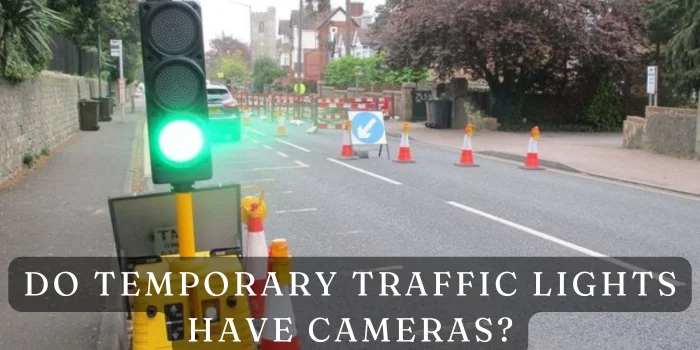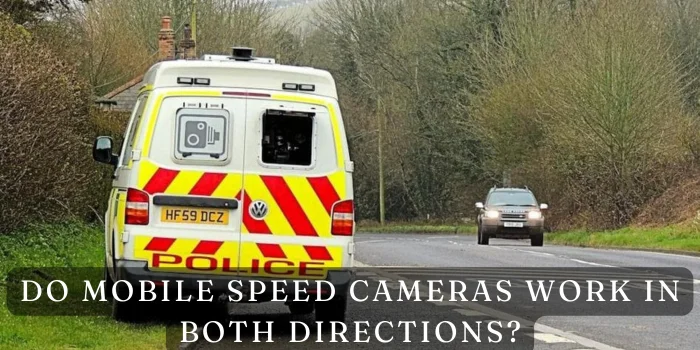How ANPR Cameras Work in the UK: A Comprehensive Guide
Have you ever driven through a busy UK city or cruised down the M25 and noticed a camera flash? No, it’s not a speed camera—it’s likely an ANPR system silently logging your journey. These unassuming devices are the unsung heroes of modern law enforcement and traffic management. But how exactly do they turn a blur of metal and motion into actionable data? Buckle up—we’re diving deep into the world of Automatic Number Plate Recognition.
What Are ANPR Cameras?
The Basics of Automatic Number Plate Recognition
ANPR cameras are like the Sherlock Holmes of Road Tech. They don’t just see your license plate—they analyze it. Using a mix of high-res cameras, infrared tech, and AI-powered software, they snap your plate, convert it into text, and cross-check it against databases in less time than it takes to say “speeding ticket.” Their mission? To flag vehicles linked to crimes, expired taxes, or unpaid fines.
Fun fact: The UK’s ANPR network processes over 50 million license plates daily—that’s more than the population of England and Wales combined!
Where Are ANPR Cameras Located?
You’ll find these watchful eyes everywhere:
- Motorways: Monitoring traffic flow and tracking long-distance criminal movements.
- City centers: Enforcing congestion charges (looking at you, London!) and bus lane violations.
- Petrol stations: A hotspot for catching drivers who “forget” to pay for fuel.
- Police cars: Mobile units let officers scan plates on the go—no need for stationary cameras.
Did you know? Some ANPR cameras are hidden in streetlights or traffic signs. Talk about stealth mode!
The Technology Behind ANPR Cameras
Image Capture: The First Step
Imagine trying to read a license plate on a car speeding past at 70 mph in the pouring rain. Tough, right? ANPR cameras ace this with:
- High-speed shutters: Freeze-frame clarity even at top speeds.
- Infrared illumination: Works like night vision goggles, cutting through glare, fog, and darkness.
- Wide-angle lenses: Capture multiple lanes simultaneously—no car slips through.
Pro tip: Ever see a sudden infrared flash at night? That’s ANPR at work, invisible to the human eye but crystal clear to the camera.
Optical Character Recognition (OCR): Translating Images to Text
OCR is where the magic happens. The system doesn’t just see “AB12 CDE”—it understands it. Modern OCR software can:
- Correct distortions: Bent plates? Faded letters? No problem.
- Read international plates: Handy for tracking vehicles from abroad.
- Adapt to fonts: From classic UK plates to quirky custom designs.
But here’s the catch: A muddy plate or a bike rack blocking the view can stump even the best systems. That’s why human verification is still crucial.
Data Matching: Cross-Referencing Databases
Once your plate is digitized, the real detective work begins. The system checks against:
- Police National Computer (PNC): Stolen cars, wanted suspects, or vehicles linked to terrorism.
- DVLA database: Expired road tax, unregistered vehicles, or cloned plates.
- Motor Insurance Database (MID): Uninsured drivers (a HUGE issue in the UK—1 in 20 drivers lack insurance!).
If there’s a match, alerts ping to nearby patrol cars faster than you can say “blue lights.”
Key Components of ANPR Systems
High-Resolution Cameras
These aren’t your grandma’s digital camera. ANPR cameras use 5-10 megapixel sensors and can capture up to 100 plates per second. Perfect for rush hour on the M6!
Infrared Illumination
Why infrared? Two reasons:
- Stealth: Drivers don’t get blinded by flashes.
- Consistency: Unlike sunlight or headlights, IR provides uniform lighting 24/7.
Bonus: IR helps defeat “anti-photo” plates with reflective coatings—a favorite trick of fines-dodgers.
Central Database Integration
ANPR systems are only as good as their data. The UK’s network links to:
- Local police databases
- National Crime Agency (NCA) systems
- Private sector databases (e.g., parking operators)
This real-time web ensures a stolen car in Glasgow triggers alerts in Gloucester within seconds.
How Data Is Processed and Stored
Real-Time Analysis vs. Historical Data
- Real-time: Used for immediate action (e.g., pulling over an uninsured driver).
- Historical: Helps reconstruct timelines for investigations. For example, tracing a suspect’s route after a burglary.
Case study: In 2021, ANPR data helped solve a nationwide fuel theft ring by mapping suspect vehicles’ movements across 20+ petrol stations.
Data Retention Policies in the UK
The UK takes privacy seriously (sort of). ANPR data is:
- Stored for 90 days (unless needed as evidence).
- Encrypted to prevent hacking.
- Audited regularly to ensure compliance with GDPR.
But critics argue: 90 days is too long. After all, why track law-abiding citizens’ movements for months?
Common Uses of ANPR Cameras in the UK
Law Enforcement and Crime Prevention
- Catching cloned plates: ANPR flags mismatches between a car’s make/model and its registered plate.
- Counter-terrorism: Monitoring routes to high-risk locations like airports.
- Missing persons: Alerts if a vehicle linked to a disappearance is spotted.
Success story: ANPR tracked a kidnapper’s car across three counties in 2020, leading to a rescue within hours.
Traffic Management and Congestion Control
- London’s ULEZ: ANPR automatically fines non-compliant vehicles entering the zone.
- Smart motorways: Adjust speed limits based on real-time traffic data from ANPR.
Fun analogy: Think of ANPR as air traffic control for roads—keeping everything moving smoothly.
Parking Enforcement and Toll Collection
- Private car parks: Track entry/exit times to enforce payments.
- Dartford Crossing: ANPR bills your registered account—no toll booths needed.
Pro tip: Always check your vehicle’s registered details with the DVLA. One typo could mean fines galore!
Benefits of ANPR Systems
Enhanced Public Safety
- Faster emergency response: ANPR clears routes for ambulances by adjusting traffic lights.
- Deterrent effect: Criminals think twice knowing their plates are logged.
Stat attack: Areas with ANPR see 30% fewer uninsured drivers, says the RAC.
Efficient Traffic Flow
- No more queues: Electronic tolling keeps traffic moving.
- Pollution control: ULEZ reduced London’s NO2 levels by 44% since 2017.
Reduced Manual Labor
- Police efficiency: Officers spend less time on routine checks, more on patrols.
- Cost savings: Transport for London saves £60M/year with ANPR tolling.
Privacy Concerns and Ethical Debates
Surveillance and Civil Liberties
“If you’ve done nothing wrong, you’ve got nothing to fear,” right? Not everyone agrees. Critics compare ANPR to mass surveillance, arguing it:
- Normalizes tracking: Where does it stop? Facial recognition next?
- Disproportionately targets minorities: Data shows some groups are flagged more often.
Food for thought: In 2022, a Freedom of Information request revealed 9.4 billion ANPR records were stored in a single year. That’s 142 records per person in the UK!
Risks of Data Misuse
- Hacking: In 2019, a breach exposed 1 million UK parking records.
- Function creep: Data collected for traffic management could be used for immigration enforcement.
Silver lining: The Surveillance Camera Commissioner oversees ANPR use to prevent abuse.
UK Regulations Governing ANPR Use
Data Protection Act 2018 and GDPR
- Purpose limitation: Data can’t be used beyond its original intent (e.g., traffic stats can’t be sold to advertisers).
- Right to access: You can request your ANPR data—but good luck deciphering the tech jargon!
National ANPR Service Standards
- Accuracy checks: Systems must maintain 95%+ read accuracy.
- Transparency reports: Police publish annual ANPR usage stats.
Did you know? Unauthorized ANPR use can lead to fines up to £17.5M under GDPR.
Public Perception of ANPR Technology
Supporters vs. Skeptics
- Supporters: “ANPR makes roads safer—I’ll trade a little privacy for that.”
- Skeptics: “This is Orwellian overreach!”
Poll stats: 63% of Brits approve of ANPR for crime-fighting, but only 34% support its use in parking enforcement (AA survey, 2023).
Transparency and Public Trust
- Body-worn camera integration: Some forces stream ANPR stops live to oversight boards.
- Public awareness campaigns: NPCC’s “ANPR Explained” videos demystify the tech.
Key takeaway: Trust hinges on transparency—people accept ANPR when they understand its limits.
Future Trends in ANPR Technology
AI and Machine Learning Integration
- Predictive policing: AI could flag “suspicious” travel patterns (e.g., repeated late-night drives to remote areas).
- Behavior analysis: Cameras might soon detect erratic driving linked to DUIs.
Ethical minefield: Who decides what’s “suspicious”? Bias in AI is a real risk.
Expansion into Smart Cities
- Emissions tracking: ANPR could auto-fine high-polluting vehicles.
- Disaster response: Redirect traffic during floods via real-time ANPR data.
Imagine: Your car talks to ANPR systems, guiding you to empty parking spots. The future is now!
Conclusion
ANPR cameras are the quiet guardians of UK roads—equal parts brilliant and controversial. They slash crime, ease traffic, and save lives, but at what cost to privacy? As tech evolves, striking the right balance will be key. One thing’s certain: Big Brother isn’t just watching; he’s taking down your plate number.
FAQs
1. Can ANPR detect drivers without a license?
No—it only checks the vehicle’s status. But if the car’s linked to an unlicensed driver, police might investigate.
2. Do ANPR cameras record speed?
Nope! They’re not speed cameras. But paired with radar tech, some systems can track speed (hello, dual-purpose tech!).
3. How do I challenge an ANPR error?
Request evidence (photos/data) from the issuing authority and appeal via their disputes process. Cloned plate? File a police report.
4. Are cyclists or motorcycles tracked by ANPR?
Motorcycles with plates are tracked. Cyclists? Only if they have a license plate (which they don’t… yet?).
5. Can ANPR work with temporary plates?
Yes! Modern systems read red/white dealer plates and green “trade” plates.



